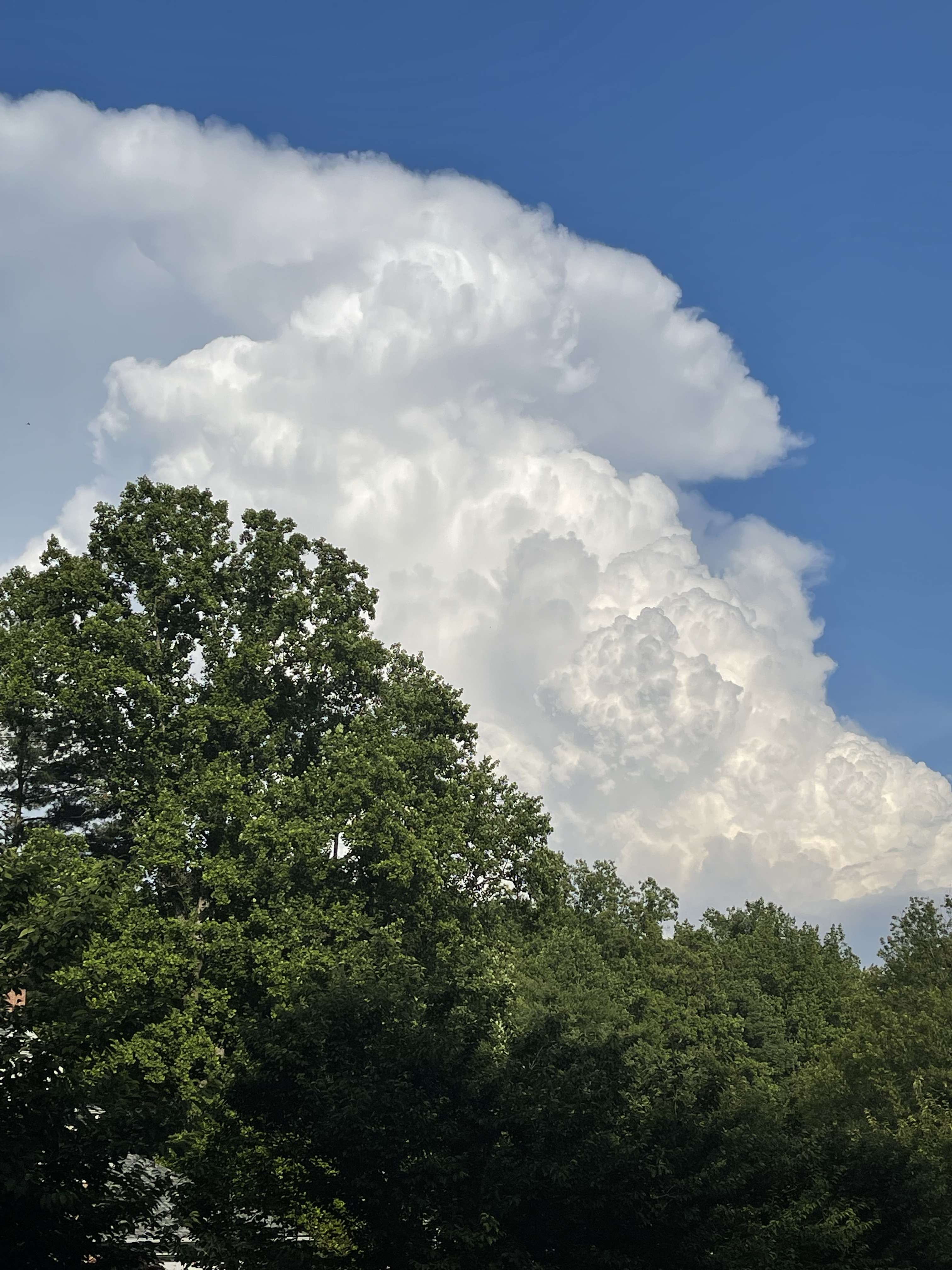-
Posts
44580 -
Joined
-
Last visited
-
Days Won
262
Everything posted by Phil
-
We will almost definitely have a Niño this winter, in my opinion. Nothing terribly strong or noteworthy, though. We may see more WWB action in mid-late June as pressures lower over the CPAC in association with the CCKW and eventual MJO. It's also looking likely that we move into a hefty La Niña for 2015-16.
-
I disagree. I'd say there is a 90-95% chance we enter a weak or moderate El Niño for 2014-15..the Walker Cell has been migrating east in the means for over 2 years and is still doing so..setting the stage for the WWBs that occurred in associating with the MJO from Jan-Apr. The large scale NH circulations are already in an El Niño state. However, as I've said for awhile now, the state of the stratosphere alone precludes us from entering a strong El Niño. The recently developed MQI (Multivariate QBO Index), Solar forcings, and the SAO (semi-annual oscillation) forcing on the QBO totally eliminate the possibility of a strong El Niño.
-
I don't usually delete a post, then re-paste it just to get the last word in. Sometimes I have a hard time understanding your posts. Not trying to be rude, it's just something I have to mention. Too many adjectives for me to handle. I thought I cited my work fairly thoroughly, but you just don't seem to agree with the science I put forth.
-
I'll try to explain this without being all "physicsy". Believers talk about the 3.67W/m^2 radiative forcing as if it's some lab-tested fact that must apply to the planetary atmosphere, which is contained within the gravity well. Initially, yes this 3.67W/m^2 forcing does manifest, as measured at the top of-atmosphere (it's less at the surface), and it would remain stagnant (true) in the absence of a gravitational field. However, because we've followed Boltzmann and his idea that electromagnetic+thermal energy and gravity are independent variables, we make the crucial mistake of attributing the thermal gradient (cooling with height) to shifts in the radiative budget/absorption potential, rather than gravity via compressional/collisional line broadening (essentially the act of converting potential energy into vibrational energy as molecules gain/lose spatial freedom). Recent experiments have proven that gravity sets the thermal gradient: http://www.firstgravitymachine.com/descript%20372_dec6.pdf Planet Uranus provides all the evidence we need. The base of the Uranian troposphere is about 320K (compared to Earth's 288K) despite receiving only a tiny fraction of the solar insolation Earth receives...with NO solar radiation reaching the surface...plus Uranus only radiates at a "temperature" of 60K. It's the immense air pressure at the Uranian surface, as a product of the immense gravity. This debate over this phenomenon was never settled in the physics community, so it was just assumed that gravity was not a factor. See here: https://tallbloke.files.wordpress.com/2012/01/graeff1.pdf Boltzmann can be refuted very easily. First though, this paper explains the nature of the problem very well: http://www.middlebury.net/nicol-08.doc The problem is that we've come to absurd conclusions: 1) That much of the planetary atmosphere sits at a temperature colder than the proposed graybody temperature of 255K, which is theorized to be independent of rotational velocity. This is physically impossible in a scenario where thermal potential is achieved at a constant percentage, regardless of air pressure. The coldest temperatures lie at the mesopause, well above the convective zone. 2) The moon's temperature, as measured by DIVINER, averages out to 197K..much colder than the theorized 255K. Again, this is correctable if we account for the slower lunar rotation rate, which the IPCC denies is a factor because they'd need to correct for Earth's higher rate of rotation and thermal capacity. http://www.diviner.ucla.edu/science.shtml 3) The presence of vast oceans. Ever wonder why the boiling temperature of water decreases with altitude? You guessed it, reduced air pressure, hence less restriction on evaporative cooling. Increase air pressure and the water must warm to reach an inter-spatial equilibrium. You have zero diurnal variations in SSTs on Earth due to the vast thermal capacity of these oceans, and the atmosphere restricting their ability to cool. So as the Earth rotates, the oceans will lose very little thermal energy overnight, hence raising the average temperature of the planetary surface. http://physics.stackexchange.com/questions/5419/explanation-for-different-boiling-points-of-water-on-different-altitudes
-
Looks like another typical anomaly, similar to those since the warming trend ceased around 2001..though we'll remain very warm globally until later this decade. Recall that we're now at solar maximum in TSI, so the radiative forcing is now about .58W/m^2 higher when accounting for emissivity @ the TOA. http://catchmypicture.com/f/BQtyPm/800.jpg Meanwhile the satellite data suggests we have a long way to go to reach the temperatures of 1998: http://catchmypicture.com/f/8UW3aJ/800.jpg
-
That was in 2012 (see image below). The pattern turned out almost exactly how I envisioned (it looked very good) but the wave breaker N of the Aleutians failed to puncture the polar night jet associated with the PVA above 100hpa, because the warm equatorial stratosphere put a damper on the tropical forcings.. So as a result we were left with a +EPO, which kept the cold up in Alaska, and the global regime was stagnant until the SSW/PV breakdown that occurred around New Years. That regime flip marked the beginning of the dominance of the -EPO and the associated rebound in the Arctic windfield/icepack. http://catchmypicture.com/RRNwqd.jpg
-

Two local views on the recent National Climate Assessment Report.
Phil replied to richard mann's topic in West of the Rockies
I've worked for the military my entire life, which is actually one of the reasons why I live where I do now. Unfortunately, none of our work is in the public domain, and won't be until at least 2021. -

Two local views on the recent National Climate Assessment Report.
Phil replied to richard mann's topic in West of the Rockies
Thanks, good suggestion. -

Two local views on the recent National Climate Assessment Report.
Phil replied to richard mann's topic in West of the Rockies
That's not true. My predictions have been accurate so far, and I think my call for accelerated cooling (initiating around 2017) should verify...the positive TOA flux is now very notable, as is the spectral broadening. The troposphere reached equilibrium in 2001, the upper ocean (upper 50m) reached it in 2007, while the deep oceans have yet to get there (they respond very slowly for obvious reasons). When warmists cite the deep oceans as proof that the world is accumulating energy, they fail to grasp the flow of energy. The deep oceans are much colder than SSTs given they recieve no sunlight, and rely on conduction/vertical mixing to change temperature. So of course they're going to take a longer time to warm to equilibrium..their thermal capacity is enormous. The idea that GHG warming (which is hypothetically thermalized in the upper troposphere) can be transported to the deep oceans without thermalization in the atmosphere is pure hogwash...added radiation requires excited molecules, and CO2's collision-to-emission rate (in the mid/upper troposphere) is about 100-1. Meanwhile, these doomsday "predictions" have failed again and again, in all domains. The recent modeling consensus has produced a warming over the past decade (with a thermal max in the tropics) that never came to fruition, and failed to capture the global cooling since 2001. I see what you're saying. I've just seen so many failed doomsday predictions from these folks that I've become apathetic to the whole scientific process. Money and politics have taken over, for now at least.. -
Dude, we're in for a Niño. A second KW was triggered by the WWB in April. While there are no additional WWBs in sight, the fact that the Walker Cell has migrated so far east suggests that more may be on the way. The Solar/QBO harmonic set off the MJO/Breakers back in January, which triggered the initial set of WWBs. The general forcing state is solidly El Niño.


